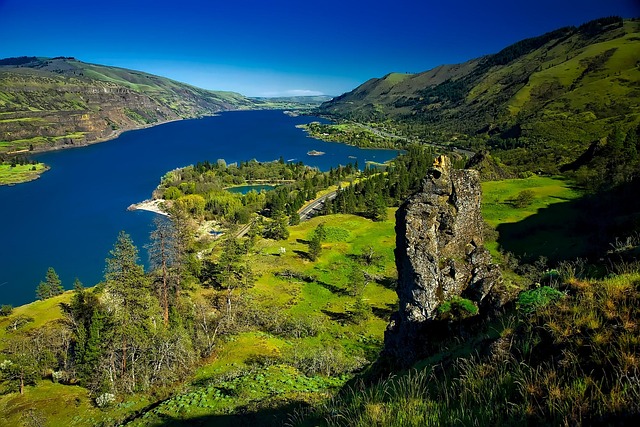The mid-19th century gold rush in Lane County, Oregon, fueled by "gold rush economics," triggered rapid economic and societal transformation. This event attracted thousands, leading to population growth, infrastructure development, and a diverse job market. The county's economy boomed, leaving a lasting legacy of historical sites and communities shaped by mining, blending past and present in its ongoing economic dynamics.
“Lane County, Oregon, experienced a transformative era during the 19th-century gold rush, attracting settlers and prospectors from across the globe. This period of economic booms and busts significantly impacted local communities, shaping the region’s identity. From the initial spark of gold discovery to its lasting legacy, this article explores the multifaceted interactions that defined Lane County’s gold rush era, with a specific focus on the economics and historical context.”
- Gold Discovery: The Spark in Lane County
- Economic Boom: Settlers and Prospectors Arrive
- Local Communities: Impact and Interactions
- Legacy: Gold Rush's Lasting Influence on Oregon
Gold Discovery: The Spark in Lane County

The discovery of gold in Lane County, Oregon, in the mid-19th century ignited a fervor that reshaped the region’s economy and social fabric. This event, often referred to as the Lane County Gold Rush, drew thousands of prospectors from across the country and abroad, each hoping to strike it rich. The influx of people brought a surge in population, leading to the rapid development of communities and towns centered around mining activities.
The economic impact was profound, with gold rush economics driving local businesses, creating jobs, and fostering competition. Mining operations sprang up throughout the county, attracting skilled laborers and entrepreneurs who contributed to the diversification of the region’s economy. This period left an indelible mark on Lane County’s history, shaping its cultural heritage and leaving behind a legacy that continues to fascinate historians and enthusiasts alike.
Economic Boom: Settlers and Prospectors Arrive

Lane County, Oregon, experienced a significant economic boom during the gold rush era as settlers and prospectors flocked to the region, drawn by the promise of riches. The discovery of gold in nearby streams and rivers sparked a frenzy, leading to an influx of eager miners and would-be fortune seekers. This period brought about a rapid transformation in the local landscape and society.
The economic impact was profound; small communities grew into bustling towns as businesses sprang up to cater to the expanding population. Gold rush economics fueled the construction of new infrastructure, including roads and bridges, connecting various parts of Lane County. The demand for goods and services created job opportunities, attracting workers from diverse backgrounds, each contributing to the vibrant, if temporary, fabric of the region during this historic era.
Local Communities: Impact and Interactions

The gold rush in Lane County, Oregon, significantly transformed local communities. The influx of prospectors and settlers brought both economic booms and social changes. Gold rush economics fostered a rapid growth in population and infrastructure, leading to the development of new towns and businesses. Local residents found their traditional ways of life disrupted as mines sprang up and rivers were lined with digging shanties. However, this period also sparked interactions between diverse groups, as people from various backgrounds converged, creating a vibrant, if tumultuous, social fabric.
Native American tribes, long inhabitants of the region, faced displacement and cultural disruption. Their traditional territories became contested ground, leading to tensions and, at times, conflict. Meanwhile, the diverse mining community included immigrants from Europe and Asia, each contributing their unique perspectives and skills. This mix of cultures created a dynamic environment where ideas and customs intertwined, shaping Lane County’s historical landscape in lasting ways.
Legacy: Gold Rush's Lasting Influence on Oregon

The Lane County Oregon gold rush era left an indelible mark on the region’s economy and society, shaping its development for centuries to come. The discovery of gold in the mid-19th century sparked a flurry of activity, drawing thousands of prospectors and settlers to the area. This influx led to a rapid expansion of Lane County’s infrastructure, including the establishment of new towns, mining camps, and transportation networks.
The economic boom generated by the gold rush had far-reaching consequences. It not only fueled local businesses but also promoted agriculture and commerce, making Lane County a thriving hub. The legacy of this era can still be seen today in the county’s rich historical sites, vibrant communities, and ongoing interest in mining as both a recreational activity and an economic driver.
